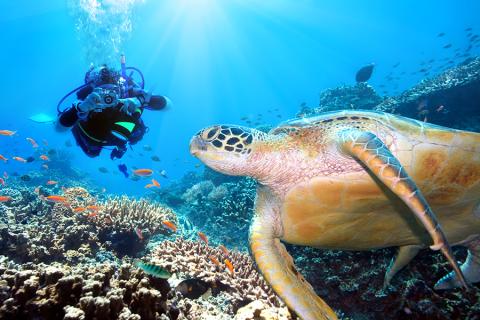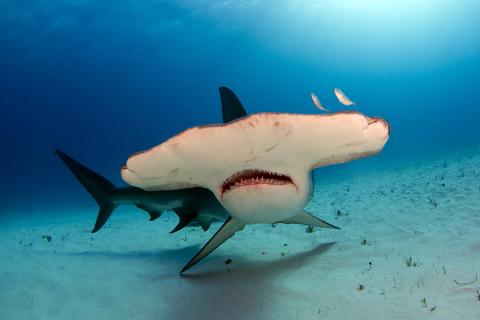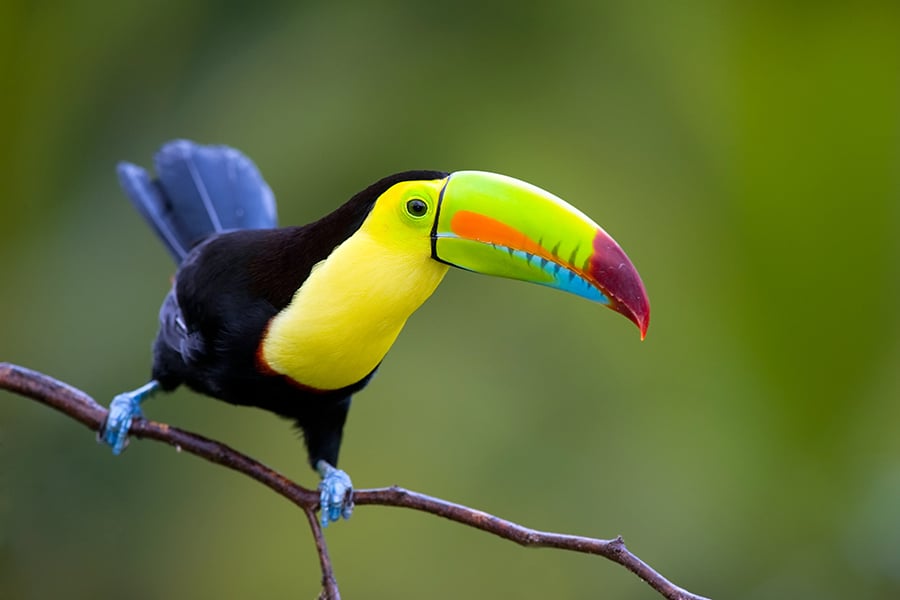
How to dive the world
If you're more mermaid than land lover, the opportunity to dive the world might be right up your street. A round the world ticket allows you to pack an incredible amount into your trip, so you can visit lots of remote dive spots, including the best fringing reefs, wall dives and wreck explorations, all in one amazing trip, rather than several separate (not to mention expensive!) holidays.
Round the world diving trip

London – Surin and Similan Islands – Sulawesi – Kakaban // Sipidan – Philippines – Great Barrier Reef and Yongala – New Caledonia – Cozumel // Costa Rica – London
If you're interested in this itinerary or something similar - we can make any route work!
Surin and Similan Islands, Thailand

The best dive spots in Thailand are located in the Andaman Sea and the Similan islands in particular are considered world-class dive locations.
Take a live-aboard cruise to discover the many uninhabited islands in this archipelago and come face to face with whale sharks, mantas and leopard sharks.
Sulawesi, Indonesia

The dive sites around the small cluster of islands off the tip of Sulawesi, Indonesia, have some of the greatest marine biodiversity on Earth. Fish lovers adore the strait between Sulawesi and Lembeh islands for its range of habitats - reefs, mangroves and plankton-rich waters.
Sulawesi diving is home to an amazing selection of unusual small species, such as frogfish crocodile fish, stargazers, mimic octopus, pygmy seahorses and a variety of crustaceans.
Kakaban, Indonesia

Not far from Sipadan island, there is a group of islands with top-notch diving; Kakaban Island is probably the most unique of the group, hosting a unique landlocked saltwater lake, similar to the one found in Palau. The lake hosts thousands of jellyfish, which have evolved into stingless forms.
Sangalaki Island's speciality is manta rays, Derawan Island’s is turtles, while the island of Maratua can offer an adrenaline rush type of dive. There's an underwater channel connecting the lagoon with the sea, and if timed with the tides you'll be in for a jet coaster ride where you literally get thrown into the lagoon!
Sipadan, Malaysia

Sipadan is a legendary destination amongst the world's dive community and is found at the top of many a wish list! There are plenty of big fish encounters to be had and everywhere you turn you'll see turtles, barracudas, large schools of trevally and marauding bumphead parrotfish.
It's no longer possible to stay on Sipidan island, but you can stay on a neighbouring island and ‘commute’ by speed boat. It’s a good idea to book this well in advance as these places get booked up quickly.
Philippines

With thousands of islands to choose from, every diver is catered for. From steep coral walls in Balicasag and Cabilao to underwater mounds with sharks at Malapascua; from muck diving in Negros to a bay full of wrecks in Busuanga; from the current-swept islands of Apo and Apo Reef to Tubbataha with its large fish, the Philippines really does have something to offer everyone.
Great Barrier Reef and Yongala wreck, Australia

Australia's Great Barrier Reef is the world's largest coral reef system, made up of around 3,000 individual reefs and more than 900 islands. If you're into diving, there's no place in the world to match it. While the Great Barrier Reef might be Australia's top natural attraction, the historic wreck of the SS Yongala is one of the world's underwater wonders.
Rocked by a cyclone whirling off the coast, the Yongala sank with passengers onboard and it was nearly half a century before she was discovered. By then, the area's rich marine life had adopted the wreck as a spectacular artificial reef. Today, the Yongala is inhabited by an astonishing array of sea creatures, barracudas, tiger sharks, sea turtles and eagle rays. The groupers are so big that locals affectionately refer to them as VWs!
Nouméa, New Caledonia

New Caledonia has the largest lagoon and one of the biggest coral reefs in the world. It is an outstanding scuba destination; with an average water temperature of 24 degrees Celsius all year!
Cozumel, Mexico

Mexico is one of the best scuba dive locations in the world due to its proximity to the Great Mesoamerican Reef. This is the second largest barrier reef in the world and stretches from the northern tip of the Yucatan all the way to the Bay of Islands in Honduras.
The Mexican Caribbean Sea is one of high visibility and warm waters of 26 degrees Celsius. The island of Cozumel is renowned as the best place to dive in Mexico.
The Blue Hole, Belize

The Great Blue Hole in Belize, a Unesco World Heritage site, is a large submarine sinkhole approximately 400m in diameter, ringed by fringing reef and inhabited by sharks - about 43 miles off the coast of Belize. It is part of the larger Lighthouse Reef System and has a dark centre, due to the depth of water on its inside.
About 40 metres below the surface are the formations that lure divers from around the world: marine stalactites up to 15 metres in length, evidence that the caves that now lie below the surface were originally formed above the sea.
Honduras

Each of Honduras's Caribbean Bay Islands (Roatan, Utila, and Guanaja) are world-class scuba diving destinations in their own right. Warm water, clear visibility and friendly locals are guaranteed here!
The diversity of the underwater species found in the Bay Islands is staggering - along with dolphins, sea turtles, nurse sharks and manta rays, whale sharks are frequent visitors.
Coco Island, Costa Rica

Costa Rica's Coco Island, the largest uninhabited island in the world, is over 300 miles offshore - it takes a day and a half on a live-aboard dive boat just to reach it. But for hardcore divers, the voyage is well worth it – with hammerhead sharks, white tip sharks, schools of tuna and the weird-looking red-lipped batfish, Central America scuba diving truly doesn't get any better than this.
Arrange your dive trip
If you like the sound of this trip or have dive plans elsewhere (dive off the Galapagos or cage dive with Great Whites perhaps!) - we can help you work your destinations into a multi-stop trip.

Last trip:
Costa Rica














